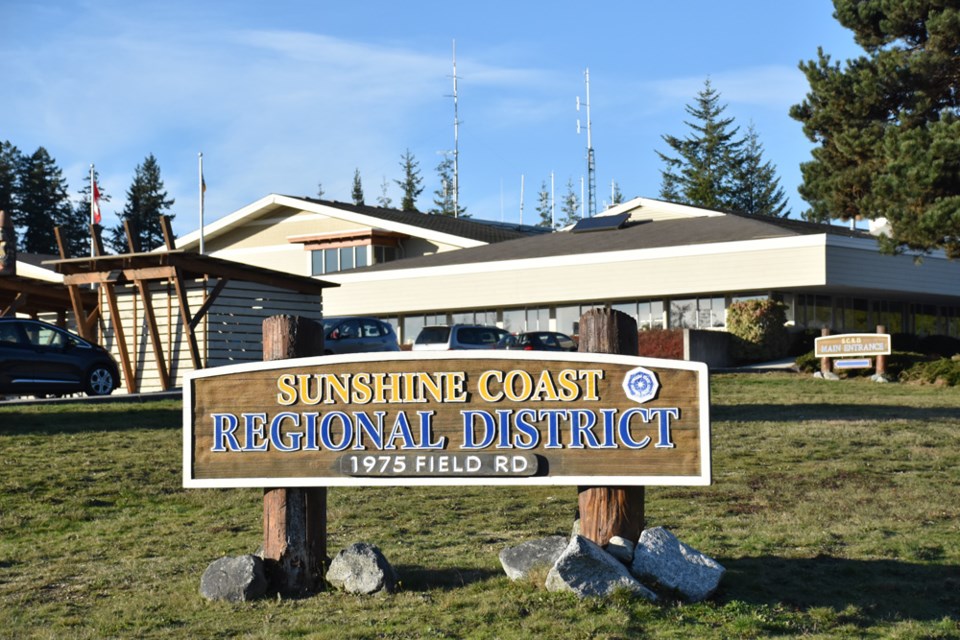An estimated $23 million price tag to develop new wells near Langdale was too rich for the Sunshine Coast Regional District (SCRD) directors to recommend for this year’s budget.
At a Jan. 11 committee meeting, directors supported use of just over $600,000 in unspent 2023 funds in the coming months to do well field design work needed to apply for additional water licences at a site near its existing Langdale well. In the committee’s view, the multi-million dollar commitment needed to drill, build a water treatment plant and connect Langdale sources to its Chapman Water System needs to be considered in relation to costs for other water supply projects, such as the proposed reservoir at the Heidelberg Materials mine site and development of wells in West Sechelt. As committee members debated which of the range of new water projects would provide optimal supply at the best price, waiting for senior government grants to help fund sizable investments like well field development was also suggested.
The committee’s go-ahead to use 2023 carry-over funds and scratch any new 2024 project funding requires confirmation by the board through current year budget decisions. Discussions on those are set to resume Feb. 5.
Licence now, build later
Manager of infrastructure services Remko Rosenboom detailed that the money left over from the $1.27 million 2023 allocation “should” get the local government to the point where water licences could be applied for this year. Reflecting on the SCRD’s experience with the Church Road (Elphinstone) supply, where the licensing consideration process rivalled the time that it took to build the well field's infrastructure, Area A director Leonard Lee said “there’s nothing wrong with having a water licence sitting on the shelf." Rosenboom agreed, stating that once provincial approval to access the water is in place and basic site design work is completed, that “would make a grant application possible if there were to be opportunities."
Provincial follow-up on Chapman water warranted
As directors questioned the prices and value of expanding well drilling work, Lee and Sechelt area director Alton Toth stated it was time to ask the province for reconsideration of the region’s water take from Chapman Lake. Neither put forward a plan or timeline to do that during the meeting.
Lee and Toth said that since being denied greater access to lake flow and directed to diversify regional water supplies in February 2019 by then minister of environment and climate change strategy George Heyman, the SCRD has complied by advancing new water sources and conservation practices. Yet, it continues to face seasonal water shortages. Those directors pointed out that senior government needs to factor in work done by the region in recent years that shows additional lake water draw downs can be done without adverse environmental impacts.
Should Langdale water be pumped to Sechelt?
Debate at committee also questioned the economic and environmental wisdom of the Langdale well field project plan to put water from one of the most southern points on the peninsula into the Chapman system, which supplies central coast areas including Sechelt and Halfmoon Bay. That would require water to travel over 25 kilometres.
Sechelt area director Darren Inkster’s suggestion was to focus additional spending to enhance new regional water supply in locations closer to where the demands are. That’s in and around Sechelt, based on current population levels and demands coming from continued development. Inkster said that dependent on test drill program outcomes, development of wells in West Sechelt makes the most sense. He also cautioned the committee members that the “sticker shock” they experienced related to the Langdale project's price will likely pop up again when cost estimates for other water system developments come in.
A focus on use of natural assets in water supply projects was an approach Gibsons area director Silas White wanted the committee to consider. He said his community’s work on such systems has been successful. In his view, minimizing the distribution distance for water makes more sense than “pumping water up and down the Sunshine Coast."



